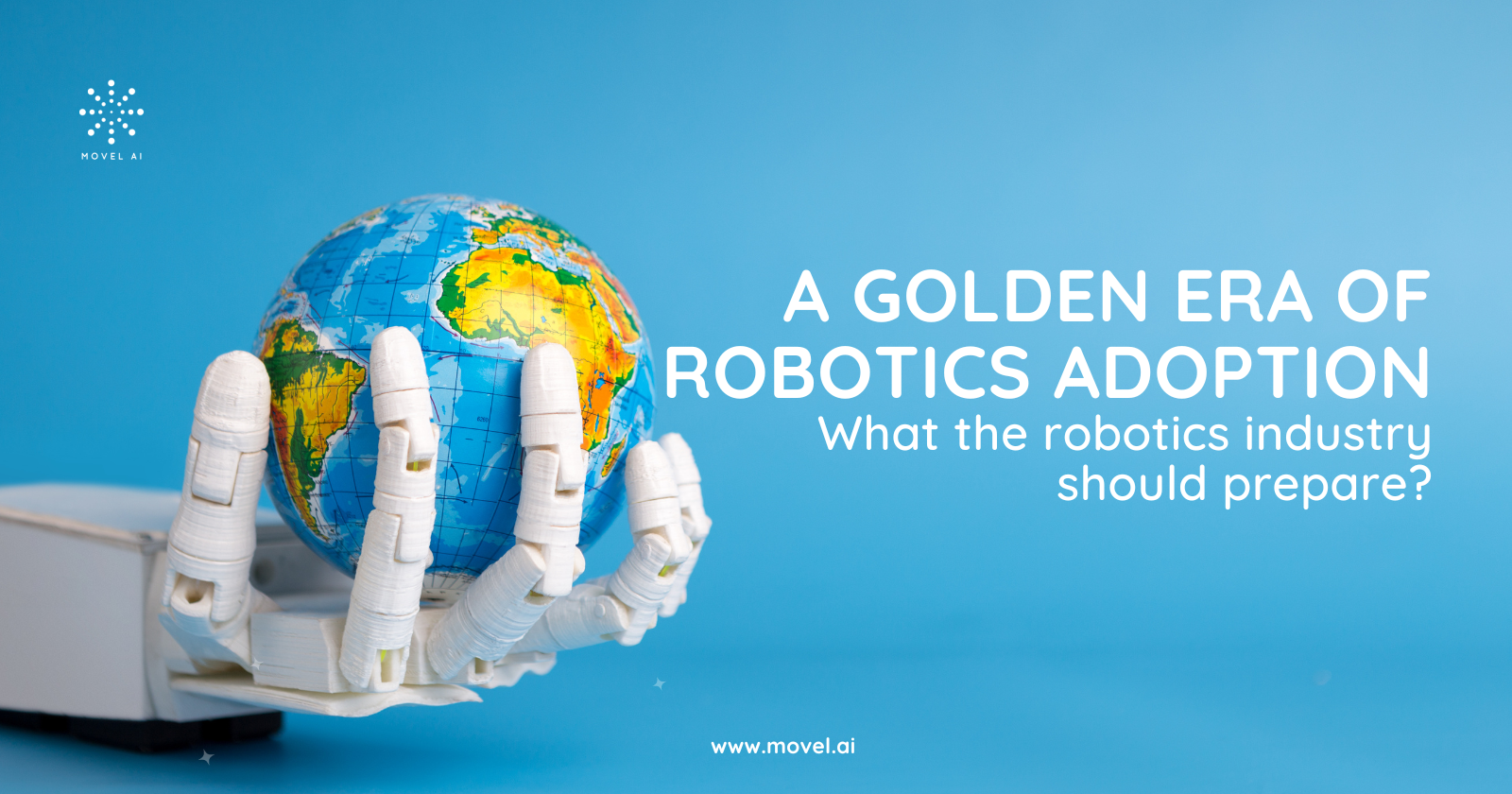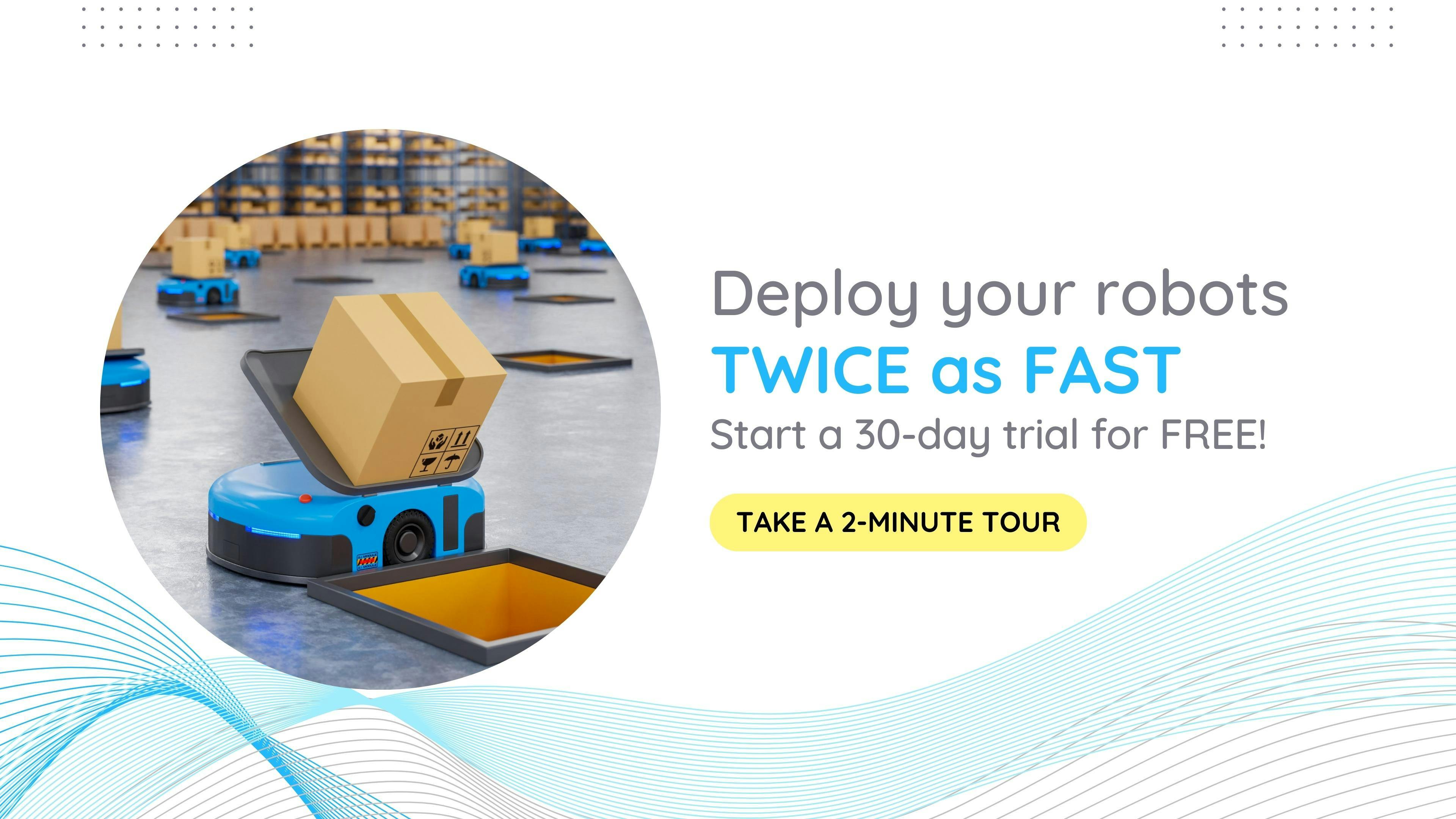A golden era of robotics adoption: what the robotics industry should prepare?
 Macy
Macy
The golden era of robotics adoption is here. According to the World Robotics 2021 report by the International Federation of Robotics, approximately 3 million industrial robots operate globally, a 10% increase. Meanwhile, global robot sales increased by 0.5% despite the COVID-19 pandemic. This occurred especially in several countries such as China, Japan, the United States, Korea, Germany, and Italy. Not just industrial robots, the service robot industry also continues to thrive, with incumbents and a variety of startups emerging every year.
To enter the golden era of robotics adoption, the robotics industry needs to expect the steps in the next few years to keep the pace or even win the race. But before that, let's see how the robotics ecosystems in various parts of the world and its uniqueness.
Robotic ecosystem all around the world
If we are talking about the robotics industry, Asia needs to be at the forefront. As the world's largest robotics market, China still leads both in the industrial and service robots industry, the second place is followed by Japan. Also in Asia are the three countries with the highest robot density: South Korea, Singapore, and Japan.
Turning to Europe, the ecosystem on this continent is still dominated by well-known brands, including Siemens, Kuka, ABB, and many more. Europe is now also filled with many robotic startups that are growing rapidly and are also very diverse, ranging from startups providing robotic process automation (RPA), e-commerce warehousing processes, smart home appliances, to robots for agriculture needs. Germany is still leading, but other countries are also still growing and striving to enter global competition.
Although still lagging behind the other two continents, America still secures its position in the robotics industry. America is known to be home to the largest supplier of service robots. An article from Automation stated that the North American robotics market experienced its best quarter ever to begin 2022: Companies from the US, Canada and Mexico ordered 11,595 industrial robots–up 28% compared to the first quarter of 2021. There are nearly 40,000 robots installed to join the workforce, used to optimise manufacturing and overcome labour shortages problems.
Global competitiveness like never before
With the post-pandemic situation, the world is opening and the robotics market will bounce even more. This means robot manufacturers in the golden era of robotics must be prepared for global competition like never before: whoever can provide robots with the most sophisticated technology, custom-made according to the industry needs, and at competitive prices, will be sought after.
China will remain a leader in the next few years, given that the country is in the top 5 for the industrial and service robots market. We can learn how China has always succeeded in providing solutions in terms of technology and competitive prices. Furthermore, global markets should also focus on Europe, as the continent is expected to strengthen in the near future. It is not impossible, this robotics startup diversity will be richer and make the continent to become the centre of the future robotics industry.
In addition, there are also some potential countries to become the next key players in the world's robotics industry, such as Singapore, Spain, Portugal, and Denmark. Although not as big as countries in their home continents such as China and Germany, these countries show a more robust robotics ecosystem than a few years ago. Singapore, for instance, has set its sights on being a smart nation and has 605 robotic workers installed per 10,000 human employees. The island-nation has invested in many areas to support the advancement of robotics; research, funding, education, talent scouting, and more.
Developing new solutions for newcomers
Who would have thought that a cup of hot coffee that we bought from a coffee shop would be served by a robot barista? This means that the robotics industry must also be aware of what kind of products should be developed to answer the future needs.
The robotics trend taking place around the world will allow certain businesses to accelerate and start adopting robots. Learn from past experiences; the sudden arrival of the COVID-19 pandemic, the emergence of the problem of labour shortages, as well as the prediction of new problems in the coming years will make the robots adoption considered as an attractive investment that many business owners will make.
Fast, sophisticated and affordable solutions are highly needed
The robotics industry that still wants to compete in the arena must start developing robots that suit the needs of future customers. To date, there are more than 1,000 service robot suppliers worldwide that are currently recognised by the International Robotics Federation. This means that robot manufacturers in the golden era must strive to be the first to provide the solutions that the market needs, as the competition will get tighter in the coming years. In addition, price competition is also something that must be considered wisely. It is not impossible for potential customers to change direction if they find competitors who offer more affordable prices, with the same advanced technology.
In a global competition that demands speed, affordability and sophisticated technology, ready-to-use navigation solutions could be the answer to simplify robot manufacturing processes.
In a global competition that demands speed, affordability and sophisticated technology, ready-to-use navigation solutions could be the answer to simplify robot manufacturing processes. Yes, of course robot manufacturers can choose to do everything themselves. However, we know building the robot itself can take weeks, it takes research, trial and error, and more. Efficiency and productivity must be the favourite keywords to provide the best solution, with less cost, less time.
Seirios by Movel AI is the best ready-to-use navigation solution. Seirios is a powerful robotic navigation solution that allows autonomous robots or mobility platforms to see and act the way humans do. Seirios’ robotic localisation and navigation solutions built with advanced computer vision and sensor fusion technology. This enables robots to move in complex indoor and outdoor environments. Equipped with both 2D and 3D LiDAR-based navigation systems, Seirios enables robots to recognise its surroundings quickly and move around smoothly. Its sensor fusion technology enables robots to detect and recognise both humans and objects (type, size, and shape) and help to reduce sensor costs by around 40-50% simultaneously. So manufacturing a robot that uses a 3D LiDAR based system won't cost a lot of money anymore.
With its versatility, Seirios can be applied to any hardware in any industry; cleaning, logistics, manufacturing, construction, and more. It also takes less than a day to install Seirios and can be done within a few simple steps.
Seirios technology was designed to provide users with a responsive user interface to control robots from any devices; laptop, smartphones and tablets. The simple design allows users even from non tech background to operate all advanced features easily as well.
While letting Seirios by Movel AI take over the robotic navigation solutions, robot manufacturers can use the extra time to focus on studying their end users; find out what else they need and what technology they might need in the future. This makes two things run in one go and allows them to outsmart their competitors.
Click here for a FREE 30-day no-obligation trial to see how your robot deployment can be easier!
Subscribe to my newsletter
Read articles from Macy directly inside your inbox. Subscribe to the newsletter, and don't miss out.
Written by

